#Pan-Fried-autism
Explore tagged Tumblr posts
Note
Mr Nick t4tails if you’ve been watching BTAS what would u say is your favourite episode
i finished btas a whiiiile ago, but my favorite episode was probably robins reckoning! followed by, in no particular order, perchance to dream, trial, harleys holiday, and mad love. if we're counting the new batman adventures, i also loved legends of the dark knight and girls night out!
10 notes
·
View notes
Note
How’s life in the 17 million pound brick of marijuana, buddy? :)
I don't LIVE in a 17 million weed brick house ;_; /silly
4 notes
·
View notes
Text
@pan-fried-autism Leonid would definitely react like this, having witnessed so much of Grem's silliness, he no longer questions anything anymore. /silly
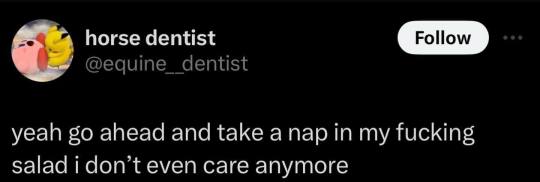
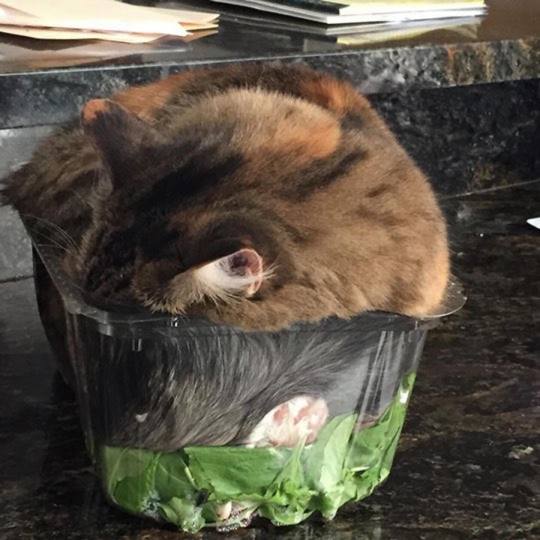
86K notes
·
View notes
Text
THE MOM PARADE

[ID: a tumblr conversation between @pan-fried-autism and @musclemanveryregular that altogether reads, "when I was... a muscle boy... my muscle dad... took me into the city... to see my mom's band. /end ID]
83 notes
·
View notes
Text
Title: After-work Nappies
Relationship: Rise!Leonardo/Yuichi Usagi
Words: Under 1k
TW: None, unless you hate fluff and good times
Author is listening to: Gypsy Girl by Crystal Waters
Summary: Work makes you eppy, so cozy nappies with your significant other is just natural.
~<3~<3~<3~<3~<3~
It was the end of the day and more importantly, the end of Yuichi and Donatello’s shift at the shop. Their Thursday shifts weren’t typically hectic considering it’s a flower shop and not everybody in New York are buying them on the regular but today they had a big order that needed to quickly be assembled.
The customer who requested it had come to the shop very last minute as they needed their flowers by the next day for early afternoon, and their boss being the sympathetic person she was had accepted the order. Donnie was not shy to express their frustration towards customers or just people in general who wait until the last minute to do things when they had more than enough time to plan (though that just might’ve been the autism talking). One would think that out of frustration the purple clad teen would give up on their end of contribution with the stressful order, but Donatello never once stopped working and stood firm with Yuichi when their boss attempted to shoo them away and told them to head home when their shift ended, insisting she was fine finishing up on her own.
In the end though, the foam wall of intricate flowers with the additional orders of large bouquets were completed and their hard work figuratively and literally paid off. By the time the two teens left the shop it was night out and very late.
The two stood outside next to the shop in silence (or more so Yuichi since the twists haired teen beside him had their headphones on), staring at passing vehicles.
‘Well, this is boring’ the platinum haired one thought to himself. Looking to his right where Donnie was busy texting someone, Yuichi closed the distance between them to lay his head on the other’s shoulder. He peered up at them and whispered “Why are we standing here? Shouldn’t we be heading to the bus stop that takes us home?”
Donatello swatted the touchy teen away from their shoulder, slightly overstimulated but not to the point of going nonverbal. “Personal space, please. Although I don’t regret helping Su-Wei, staying there later than usual really disrupted my daily routine and I wish to go home now and not in an hour and a half, so I just texted Raph to pick us up. Said he’d be here in fifteen minutes B-T-W.”
The taller teen watched as Yuichi made the tiniest sidesteps away from them, constantly looking up from his feet to see when the other approved of their distance. With only their arm four inches away from each other, Donnie sighed tiredly as they signed ‘you’re good’, knowing that’s how far the Japanese boy would accept being away from them.
Yuichi flashed them a cheeky smile as he opted to communicate with his friend via text as to prevent further discomfort than what Donnie was already in.
Jackass: I know you luv me Donnie :3
Don: Clingy bastard, contain that affection for Leo since he’s equally as clingy and the one you’re dating
Jackass: We’re not clingy we just have a lot of love to give!
Don: My ASS you two aren’t! You two can’t even last a day being without each other.
Jackass: THATS NOT TRUE >:(
Jackass: We can last 3 days without each other >:p
Both playfully bantered about for the remainder of their wait and before they knew it Raph had arrived to pick the two up. The car ride was filled with excited chatter between Yuichi and Raphael, both eager for this upcoming weekend’s wrestling match that they bought tickets for to see live.
The trio arrived to the Hamato household where everyone had already retired into their rooms for the night. Raph informed them that if they were hungry Mikey had stored away leftovers of the sautéed veggies and pan-fried pork chops they had eaten earlier in the fridge, then bidding them a goodnight as he could finally be able to sleep in peace knowing his sibling was back in the safety of their home.
Donatello was next to walk to their own room, stating they needed to deregulate by having “Donnie Time” (which was just them immediately changing out of their day clothes and into loose ones, then curling up and rocking themself in their sensory swing as they play Minecraft).
Now in his solitude, Yuichi realized just how exhausted he actually was with his body feeling heavy and sleep desperately calling for him. On autopilot his legs lead him to his boyfriend’s room, and he hopes his door is unlocked because Leo had a habit of locking it and Yuichi would very much prefer to sleep on his comfortable bed rather than on the Hamato family’s cold couch.
When he reached Leo’s door he found it was indeed locked but heard movement coming from inside. Too tired to use his hands, Yuichi used his forehead to knock on door and after a solid minute of waiting it opened.
“Mikey why are you bang-, Yuichi? Why are you here?” Leonardo, who was dressed in causal sleepwear (his favorite Ebenezer Scrooge type long since gone and ALLEGEDLY destroyed by his twin plus Mikey) with the addition of his favorite royal blue bonnet and a translucent facial mask, looked at his boyfriend quizzedly. It was a school night and the other’s guardian was typically strict about sleepover days, so sue Leo for asking.
“Am I not welcomed here no more? Should I take the stuffed rabbit back?” With a tired shrug he continued “Hueso gave the green light to let me sleep me over this one time ‘cause of how late we got out of work, but since it seems like you don’t want me here, I’ll just go sleep on the cold, lonely couch where I’ll most likely wake up sore from in the morning!” The teen exaggerated as he played off as if he was going to leave.
Rolling his eyes at the act, Leo pulled his boyfriend inside his room by the arm. A surprised “woah” escaped Yuichi’s mouth, allowing Leo to take the chance to close the gap between them and steal a kiss.
Yuichi scrunched his nose as he remembered Leo was still wearing a facial mask. “Nooooo! Your facial thingy’s gonna smudge onto meee!” He muffled out as their lips were still smooshed against each other.
Pulling away, Leo swiped his fingers across his cheek then flipped them over to show Yuichi that it wasn’t wet. “Look, it’s dry, so shut up.” Continuing where he left off, the slightly taller male cupped his partner’s adorably squishy cheeks and pecked kiss after kiss on the puckered lips in front of him, all while Yuichi could only pout as his cheeks were held hostage by the strong grip the other’s hand had on them (not that he hated it, he just didn’t like how he couldn’t kiss him back).
After the broad-shouldered teen released the toned one to peel off the face mask, Yuichi staggered his way to the bed while gradually removing all items and clothing on his being until he was only left in his boxers. He then tossed himself onto the semi-soft king mattress with his limbs outstretched comfortably as he waited for Leonardo.
“That tired huh?” He heard Leo ask when he came out of his bathroom and shut the door close that lead to the hallway. He heard as his footsteps grew closer then felt a nudge on his calf. “Want some pj’s or you good like that?”
“I’m fine like this, now come cuddle me” Yuichi replied as he sat up and made grabby hands at Leo. Amused and ever so loving this extra clingy side from his boyfriend of almost two years, Leo grabbed Yuichi’s phone from his discarded pants and set it to charge on a wireless port Donnie had made for all of them. He then climbed into bed and laid on the right side as Yuichi sat on the left.
Quick to cling himself onto his love, Yuichi slotted their legs together and hugged Leo’s torso as he laid his cheek above his sternum, sighing when he felt familiar smooth hands undo his tight ponytail and running a hand through it to soothe it out. And as if the delightfulness of it all wasn’t enough, he felt Leo softly scratch his short nails around the area where he felt the most tension on his scalp.
Leonardo smiled as he heard the boy below him groan pleasurably and continued the action until he felt that the tension from the hairstyle Yuichi had had dissipated by now.
“So bun, you gonna tell me what happened that made you and Dee come home late from work?” Leo asked curiously but was met with silence. Peering down he slightly shook the other, thinking he was probably just pretending to be asleep. “Yui? Hello?” A soft snore was heard from below, the head scratches from before seeming to be the cause for Yuichi’s rapid descent into slumberland.
The bonnet covered teen sighed as he watched his boyfriend’s sleeping form with endearment. Behind those closed monolith eyelids were the prettiest and most warm brown eyes that almost glimmered under the rays of a setting sun, and if you looked at his face up close enough, you’d notice the faintest of freckles sitting across his golden-brown tawny skin, earned from the hours of outdoor labor on hot sunny days back when he still lived on his aunt’s farm in Japan. And to spike up on the cute-o-meter the Japanese boy had the most winsome smile that accentuated that sportive charm he carries.
Deciding to allow his significant other to sleep, Leo played online with Donnie who was still awake for an hour or so before both of them logged off and called it a night.
Blearily, he pressed soft kisses onto the crown of his boyfriend’s head, heart warm and full and as the heavier his eyelids got, he could only smile blissfully as he too succumbed into peaceful slumber.
#rise leonardo#rise leo#yuichi usagi#samurai rabbit#usagi yuichi#rottmnt#rise tmnt#leoichi#leochi#rise leosagi#my writing#my work#rise usagi#riseleoichi
31 notes
·
View notes
Note
George Cubbins/Karim headcanons?
there’s not much i can say about this man becuase he is already perfect.,.but i will try
-i do think he is legally blind without glasses like that bitch can’t see anything
-he gives demiboy vibes, and pan/bi <33 love him fr fr
-i think he has all his friends’ egg orders down pat. lockwood likes his on toast, intact, but so that if you poke it with a fork it’s a little runny, lucy likes hers fried but a Little bit soft, holly eats hard-boiled ofc, flo drinks those awful raw egg shakes for 💪protein💪 and she probably gets lockwood in on it too. kipps just eats dry fucking toast.
-lockwood was a malnourished british boy raised on entirely greige food and george really said hell nah we giving you the real persian shit, high-fived his mom, and went to work
-lucy also comes in knowing only bIscUiTs n gRaVy and george is determined to condition her like pavlov.
-i think he smells like cardamom. he just does ok
-autism
-special interest in the problem!! lucy and george have to remind him to eat. they even tried to cook for him once and almost started a fire.
-once when he was sick they actually did cook for him and were absolutely WARLIKE about getting it right (george couldn’t sleep bc they were yelling at each other about tablespoons) but they got it no fire or anything and brought some food up to him and he started crying
-i think he wears cool little bracelets
-i saw a post once that because he was raised in a #engineer family, he knows absolutely egregious amounts of engineering and just assumes this is normal. “what do you mean you don’t know all the hazen-williams constants, everybody knows the hazen-williams constants.”
-i’m so bad at headcanons whakdkdnsjd
-this boy cares so much it hurts. have you ever seen him talk about the Problem or his friends or his family?? he cares so deeply about so many things and HE JS THE BEST OF US FR FR
-he loves his found family hope this helps <3
#SORRY THIS TOOK SO LOMG AKVKSJCS#krash 💥#lockwood & co#lockwood & co netflix#george cubbins#george karim#asks from the ninth circle of hell#gaslight gatekeep ghosthunt#headcanon
58 notes
·
View notes
Text
That is entirely accurate and fair ^^
he’s got that previously neglected shelter dog rizz. he looks like he wants to quietly sit next to you on the couch while you watch TV
122K notes
·
View notes
Text


Datecember day one!! Prompt list credit to @pan-fried-autism
I plan to stick with sketches of Vivian and Evie to flesh out my fantasy world for my upcoming webcomic!! I'm very excited ☺️
#art#character art#digital artist#drawing#artists on tumblr#digital art#kileys art tag#spoonraider art tag#digital drawing#art moots#prompt#prompts#prompt list#prompt challenge#art challenge#drawing challenge#oc#original character art#original character#character artist#character illustration#character design#illustrations#illustrator#illustration#female illustrators#december 2023#christmas art#holiday art#commissions
7 notes
·
View notes
Note
what would be this dolls name?
monique verbena!
7 notes
·
View notes
Note
eeby deeby spell
Greetings Rey :-.)
B-But I don't want to be eeby deebied ;_;. /silly
Yours sincerely
Bowler
4 notes
·
View notes
Text
I do NOT >:,|
Call-out post @bowlerhatwearer hates all life and hates all friendship
2 notes
·
View notes
Text
Yesterday I made pan-fried gnocchi with blistered tomatoes and fresh mozzarella, and it was very gooooood!
R's post-NICU developmental checkup went well, like I expected it to. The only thing that's maybe lagging a little (though not by much) is his language development. He also got an autism screener, which he passed without being flagged. Who knows, though. I've thought a lot about what it might be like to raise another child with autism and ADHD, and I keep coming back to how we can't control any of what happens with either of our children. I didn't have another baby for a long time because parenting my big kid has been complex and overwhelming at times. But if R gets the same diagnoses in the future, well, we'll deal with it then and with the benefit of having learned how to advocate for and parent a neurodivergent child.
I have extra time next week because we have fall break on Monday, Tuesday, and Thursday, but also I'm missing some very important library books that I need to write my paper!!! I'm going to put my head down and try to write as much as I can and hope the library will reissue those books to me.
It's damp and cool here today, which is very nice. I'm grateful it's Friday.
7 notes
·
View notes
Text

a quick drawing based on this for @pan-fried-autism and their cool snail
17 notes
·
View notes
Note
dude check out the blog pan-fried-autism. they drew a piece of fanart you should def check out. it's rad af :)
I dunno, dawg. If it's Rosemary in a Saw trap, that's definitely not something I, personally, want to see.
6 notes
·
View notes
Note
Your car is wonderful and awesome Strawberry, don't let anyone tell you otherwise my dear :-.)
~~Nikolai
i think ur car looks ugly
I’m calling my husband on you >:|
@bowlerhatwearer hey can you get nikolai they’re making fun of my awesome car
17 notes
·
View notes
Text
The Guardian: In our blood: how the US allowed toxic chemicals to seep into our lives
For decades, it was the secret behind the magic show of homemaking across the US. Applied to a pan, it could keep a fried egg from sticking to the surface.Soaked into a carpet, it could shrug off spills of red wine. Sprayed onto shoes and coats, it could keep the kids dry on a rainy day.
But the most clandestine maneuver of perfluorooctanoic acid, or PFOA, was much less endearing: seeping into the blood and organs of hundreds of millions of people who used products containing the chemical.
Most people who have heard of the chemical likely know about it because it was found to be toxic and removed from consumer goods in 2015 after decades of use, leading to modern boasts of “PFOA-free” on product packaging. In recent years, PFOA has also become the target of widespread regulatory action, news media attention and even a Hollywood movieas contaminated drinking water was discovered in hundreds of communities across the country.
While most concerns about the chemical’s health risks have centered on communities where research has linked PFOA to cancer and other serious illnesses, public health researchers say it serves as a klaxon of something more insidious.
PFOA is just one of dozens of modern-day chemicals that are found in the bodies of the majority of Americans, regardless of where they live. Research has also shown that more Americans are facing a growing number of ailments and disorders, from autoimmune disease to developmental disorders such as autism and some cancers. Scientists are increasingly concerned these two truths are linked, and some believe that the American public and lawmakers alike are dangerously unaware of the perils lurking in their veins.
“It’s very hard for people to understand exposure and effects when they can’t see a smoking gun,” said Linda Birnbaum, a former director of the National Institute for Environmental Health Sciences.
Sorting out the causes of troubling public health trends is extremely difficult. For example, how much is due to aging demographics, personal behaviors, diagnostic changes or environmental exposures? But in recent years, scientists have accumulated enough data to conclude with confidence that humans face significant health risks from exposure to common commercial chemicals,and that regulations designed to protect them are failing.
“I do think this area has been badly overridden by industry,” said Wendy Wagner, an attorney and professor at the University of Texas at Austin School of Law who has written about chemical contaminants. “People don’t realize that we actually encourage and even subsidize the production of tens of thousands of chemicals, while imposing essentially no requirements on manufacturers to test their safety. Nor do we ask whether we need the chemical, whether it’s useful, whether there are safer substitutes – or what it’s doing to the environment.”
When to declare a chemical safe or unsafe is critical. Experts say that due to flaws in federal regulation, the US Environmental Protection Agency (EPA) is perennially playing catch up. The majority of the 86,000 consumer chemicals registered with the agency have never received vigorous toxicity testing.
The EPA doesn’t dispute that untested chemicals have been approved for use, but told the Examination that “far fewer” than 86,000 chemicals are still used today. The agency further stated that it believes it has made “significant progress” in addressing the risks of chemicals over the past four decades and in recent years has worked to draft a bevy of new rules and actions to address remaining high-priority risks.
“Where we identify unreasonable risks from a chemical, we must take action to address [them]”, the agency wrote in an email. “These proposed rules are great examples of protective actions that have prompted strong engagement from industry and environmental [non-profit] stakeholders, but we made them by following the law and the science to protect human health.”
The American Chemistry Council (ACC), a trade group for the chemical industry, also pushed back on the notion that commercial chemicals are under-tested or there was a lack of toxicology data, saying in a statement: “Chemicals in commerce are subject to stringent government oversight.”
But PFOA is an example of how a chemical can slip through the cracks and cause damage even when its dangers are eventually identified.
A phaseout of that chemical in consumer products began in the early 2000s and concluded in 2015, but it remains in the bodies of more than nine in 10 Americans today, its impacts still unfolding.
Tracey Woodruff, director of the University of California San Francisco program on reproductive health and environment, said the dangers of PFOA exposure are real, if difficult to appreciate. A study she helped lead, published in 2014 in the journal Environmental Health Perspectives, calculated a relationship between decreased birth weight and PFOA.
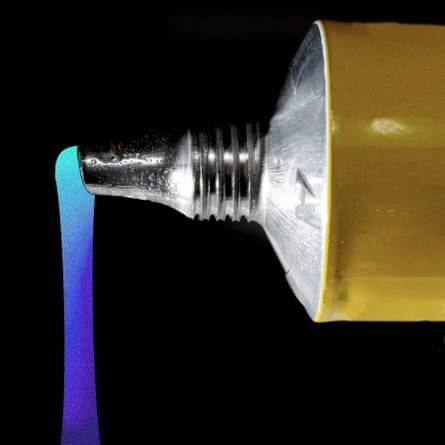
“What we have learned is that even small amounts of these chemicals have an impact on fetal development, including increasing risk of infant death,” said Woodruff, who is on the advisory council of the Examination.
But the dangers of chemical exposure go far beyond PFOA.
Premature babies in intensive care units appear to have higher amounts of plastics chemicals called phthalates in their bodies, likely from exposure to breathing equipment, according to a 2020 paper authored by Chris Gennings, director of the division of biostatistics at the Icahn School of Medicine at Mount Sinai in New York, and colleagues. Phthalate mixtures, the report noted, can impact “neurobehavioral development”, with other studies finding links to aggression, inattention and rule-breaking behavior in boys from prenatal exposure. Gennings adds that even healthy children face similar risks from plastics chemicals still commonly found in baby bottles.
And studies show even the most cautious parents may not be able to escape the sins of the past.
Over the last 10 years, new research in the field of epigenetics, which studies how behavior and environmental exposures can affect how genes work, has found increasing evidence that harm from chemical exposures may become inherited. The chemicals change how the body operates, passing the changes down through two or three generations, and maybe even more. While the effect is well established in animal studies, researchers are now going about the much more difficult task of studying people and sorting correlation from causation, according to Carrie Breton, an environmental epidemiologist at the University of Southern California who published a review of recent research on epigenetics in 2021.
But for Breton, the data linking some chemicals to toxic effects is already strong enough to warrant action, even if the exact mechanism – epigenetic or otherwise – is not yet fully understood.
“Should we understand how it’s happening? Can that help inform interventions? Yes,” Breton said. “But from a policy point of view … If we have evidence of that harm, we should be able to start regulating and doing something about it now.”
Why chemicals in consumer products aren’t better regulated
Sixty-one years ago, the marine biologist Rachel Carson wrote Silent Spring, a book often hailed as revolutionary for its compelling communication of the risks of pesticides and other substances. The book is credited with helping propel a popular movement that led to the creation of the US Environmental Protection Agency (EPA), as well as the federal Clean Water and Clean Air Acts, which have dramatically reduced environmental pollution over the past half-century.
But, experts say, health threats from commercial chemicals remain fundamentally the same. So what went wrong?
Sarah Vogel, senior vice-president for healthy communities at the non-profit Environmental Defense Fund, says US environmental standards have improved in some ways since the publication of Silent Spring, especially in the first few decades after the book was published. Urban waterways like Ohio’s Cuyahoga River aren’t catching on fire anymore. Neighborhoods are no longer being sprayed with dichlorodiphenyltrichloroethane (DDT),which has been linked to breast cancer, hypertension and obesity in the daughters of women exposed to the bug killer. Vogel’s organization and others successfully pushed for a widespread ban of the pesticide in the US in 1972.
Progress on chemicals in consumer products, however, has lagged behind, Vogel said.
“On the chemicals piece – chemicals that are going into everything from paints and carpeting, cars and planes and all the rest of it,” Vogel said. “Think of the complexities of plastics that we use now. There have been a lot of new chemicals we’ve produced.”
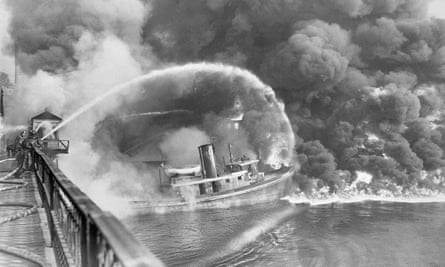
Ostensibly designed to enable the EPA to collect information on chemicals from the companies that created them and ban the ones found to be unacceptably toxic, experts say the law had major flaws from the start. Perhaps none loom larger than the law’s “grandfathering” of tens of thousands of chemicals already in the marketplace, removing most from scrutiny. Vogel says the law was further diminished by rollbacks and budget cuts.
“TSCA effectively became a dead letter law,” Vogel said, meaning its original intentions were gutted.
In one of the most significant moments in the law’s history, in the 1980s the EPA moved to ban asbestos, a well-known carcinogen. But a 1991 US court of appeals decision tossed out most of the ruling, weakening the power of TSCA, and the administration of President George HW Bush declined to appeal. Contrary to popular belief, asbestos remains legal for various uses today.
“That really kneecapped the EPA,” said Melanie Benesh, legislative attorney for the non-profit Environmental Working Group. “It made it much more difficult for them to do much for existing chemicals.”
In 2016, the US Congress passed the Lautenberg Act, which overhauled the 40-year-old Toxic Substances Control Act and gave the EPA new authority, leading to the creation of two separate programs at the agency to review old and new chemicals. The agency announced a plan last year to fully ban asbestos.
But policy specialists like Vogel are withholding judgment on the significance of the reform as the Biden administration makes its mark, introducing new regulations on PFOA and similar chemicals in drinking water and evoking TSCA to potentially regulate 10 more toxic substances, including those used in rubber, plastics and fuels.
Although the EPA told the Examination it agrees that TSCA “largely failed to serve its purpose” over its first four decades, it said the 2016 update allows the agency to “effectively protect human health and the environment” through a slew of new mandates and regulatory authorities.
“Despite facing a massive increase in responsibilities and statutory deadlines from the most significant piece of environmental legislation enacted in a generation, the [Trump] administration never asked for any additional resources to implement TSCA,” the agency said. “Still, we’ve taken the resources we have and managed to make significant progress.”
For its part, the American Chemistry Council says it has “consistently called attention to challenges with TSCA” and supports the law.
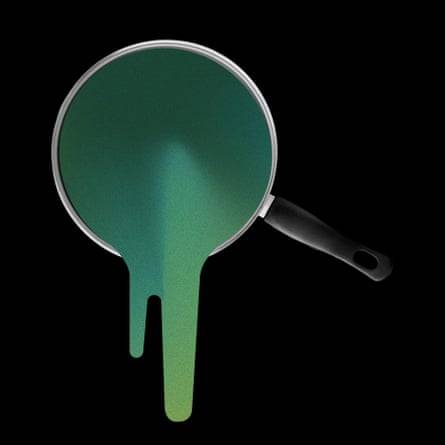
But others say the numbers tell the story. Kyla Bennett, a former EPA employee and current director of science policy at the non-profit Public Employees for Environmental Responsibility, told the Examination that at recent rates of review, it would takethousands of years to assess all 86,000 chemicals currently approved for use.
EPA staff interviewed by the Examination say the agency’s chemical programs remain understaffed, overwhelmed and burdened by still-ineffective regulations and a persistent culture that enables the chemical industry instead of counterbalancing it.
Martin Phillips, an EPA chemist, was reassigned from the agency’s new chemicals program in 2020 after filing a whistleblower complaint. In an interview, Phillips noted that the EPA is currently assessing risks associated with asbestos, phthalates and ethylene dibromide – a fuel additive considered highly toxic and likely carcinogenic – nearly 40 years after Bill Drayton, a former EPA assistant administrator, warned in a report that the agency was moving too slowly to regulate them. “The agency felt it had enough information back then to regulate the chemicals, but that regulation hasn’t happened in 39 years,” Phillips said.
Cancer isn’t the only health risk from modern chemicals
Cancer is perhaps the first ailment that comes to mind when most people imagine the risks of chemical exposure. And with good reason: the disease is the number two killer in the US and remains a persistent threat from many modern chemicals, say researchers.
But a focus on cancer can obscure other risks, including heart disease, which kills 90,000 more people annually.
Philip Landrigan, a world-renowned epidemiologist and director of Boston College’s global public health program and Global Observatory on Planetary Health, has been at the forefront of efforts to restrict toxic substances like lead and asbestos for decades. While asbestos is a potent carcinogen, lead impacts many parts of the body, including the brain and bones. Perhaps deadliest is its damage to the kidneys, which Landrigan says likely increases blood pressure and hypertension, raising the risk for heart disease and stroke.
“Cancer is a frightening disease,” Landrigan said. “But actually a larger number of pollution-related deaths are due to heart disease and stroke.”
Vogel says that over the past several decades, advancements in the understanding of the human genome, microbiome and other bodily systems have allowed researchers to begin developing a better picture of these types of non-cancer risks from exposure to even very small amounts of chemicals.
One of the most alarming varieties is “endocrine disruptors”, a moniker given to any substance that interferes with the body’s transmission of hormones – or even mimics them. This causes cascading effects in the body that may be difficult to predict or understand, impacting metabolism, energy levels, reproduction, development and mood. Scientists believe that many “forever chemicals”, including PFOA, operate this way by accumulating in the body and tinkering with its organs and systems.
Birnbaum, the formerdirector of the National Institute for Environmental Health Sciences,compares the effect to medicines such as birth control pills. Like medicines, commercial chemicals also alter the body’s processes.
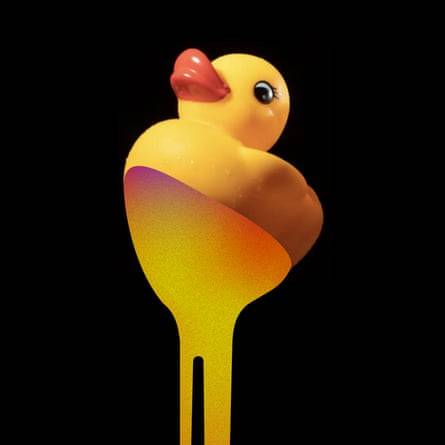
Endocrine disruptors can compound the risks of exposure to other toxic substances. Landrigan points to bisphenol A, a plastics chemical American parents are perhaps most acquainted with because of the packaging of baby products marked “BPA-free.” Landrigan says research shows BPA, like lead, contributes to heart disease, likely by modifying cholesterol levels and increasing atherosclerosis.
But it is endocrine disruption during pregnancy and early childhood – what Landrigan calls “the first 1,000 days of life”– that most keeps researchers up at night.
“That’s when the organ systems in a child’s body are being formed,” Landrigan said. “The development of the brain, lungs, the immune system, the reproductive organs … It doesn’t take much to derail them.”
Studies show phthalates and polychlorinated biphenyls (PCBs), both endocrine disruptors, can cause brain injuries in children, showing up as reduced IQ later in life, says Landrigan.
The health effects of endocrine disruption can be impossible for an individual to link to chemical exposure because they’re hidden among a sea of other variables, such as parenting, education and chance.
For some, the chemical effect will pale in comparison to other factors. But for an unknown percentage, it will be just enough to harm or kill.
“And multiply that by millions of people,” Landrigan said.
Changing how chemicals are regulated
Chemicals are everywhere in modern society.
The phthalates that Gennings’ research shows enter the bodies of babies in neonatal units likely come from the breathing apparatus they could otherwise die without. A slew of PFAS chemicals are integral in the manufacturing of microchips.
But Gennings says if certain types of breathing apparatus expose babies to fewer phthalates, simple awareness and selection of the better equipment could drive down exposures.
“People need to know about the chemicals they are exposed to. How can you make an informed consumer decision without knowing how to balance risks and benefits?” Gennings said.
Wagner, the University of Texas at Austin School of Law professor, doesn’t trust industry to be forthcoming. In 2008 she co-authored a book titled Bending Science: How Special Interests Corrupt Public Health Research.
Wagner has laid out a series of steps she believes the EPA could take to better regulate chemicals. The proposal includes requiring chemical companies to do more robust toxicity research and provide easy-to-understand analysis of a chemical’s risks and benefits to the EPA and the public. That would allow the agency to focus instead on enforcement.
Many experts say the EPA should ban entire classes of chemicals and create new regulations that consider cumulative risks from chemicals known to target the same organs.
The EPA told the Examination that it’s already thinking along these lines. For example, the agency said that earlier this year it released a “proposed approach” to assess the cumulative risk of phthalate chemicals and is also working to break hundreds of PFAS chemicals into subclasses based on shared characteristics.
“The agency is focused on improving its ability to address multiple chemicals at once, thereby accelerating the effectiveness of regulations, enforcement actions, and the tools and technologies needed to remove PFAS from air, land and water,” the EPA said.
Landrigan, the 81-year-old Boston College epidemiologist, takes the long view. Over his decades-long career, he’s worked with scientists and lawmakers to slowly but surely diminish the seemingly intractable global health threats of lead and asbestos. He’s optimistic it can be done again.
“There’s that old parable: ‘When’s the best time to plant a shade tree?’” Landrigan said. “The answer is 20 years ago. But the second best time is now.”
#pfos#pfas#forever chemicals#PFAS Chemicals#EPA#pollution in our blood#In our blood: how the US allowed toxic chemicals to seep into our lives#toxic chemicals
2 notes
·
View notes